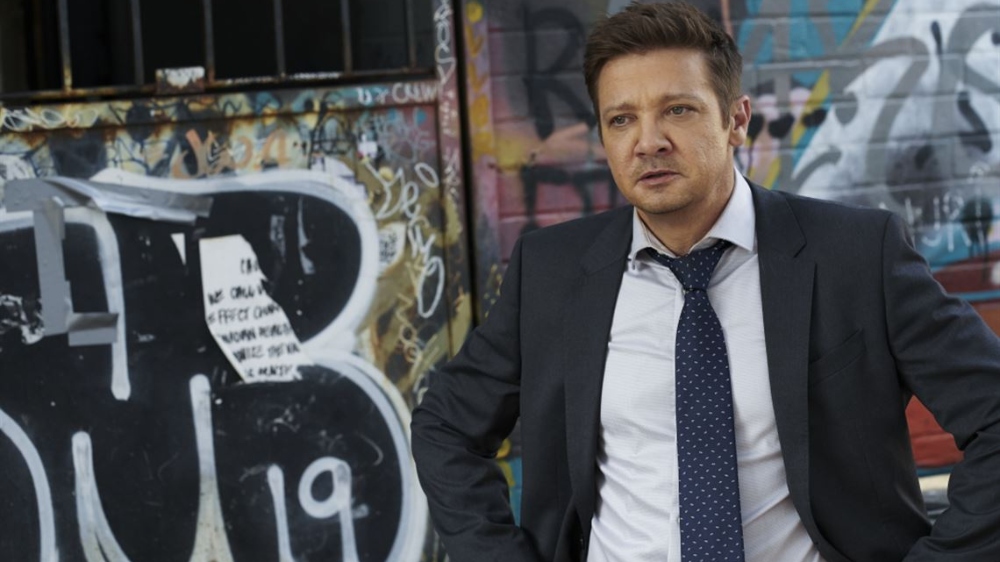
The fading town of Kingstown, Michigan is a town that’s supported by prisons — seven of them in all, housing 20,000 people, within a 10-mile radius. The prisons, and the economic infrastructure that supports them, have replaced former factories and warehouses. Prison isn’t just a way of life to these people, it’s their entire life… and sometimes, death, too.
The Paramount+ series Mayor of Kingstown stars Jeremy Renner as Mike McLusky, an ex-con who tries to keep the peace between the guards and inmates on the inside of those prison walls, and the cops and gangs who are still battling on the outside.
The series was created by Taylor Sheridan and Hugh Dillon (who also plays a significant role as slightly corrupt cop Ian Ferguson), and it co-stars Dianne Wiest, Tobi Tamfeta, Taylor Handley, and Emma Laird. Sheridan wrote all 10 episodes and directed two of them, while the rest were directed by Guy Ferland, Clark Johnson, Stephen Kay, and Ben Richardson, the latter of whom also served as a DP on the series.
Production Designer John Willett has spent decades working on dozens of films and TV shows, including The Grey and The Returned, but he had never found the right opportunity to work with Sheridan until Mayor of Kingstown. He spoke to Below the Line by phone about the inherent challenge of shooting a sprawling prison drama during COVID.
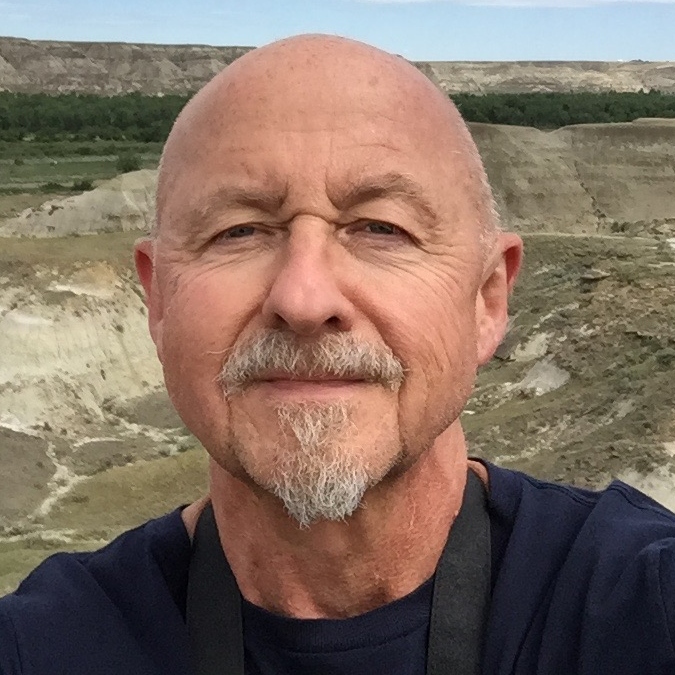
Below the Line: When did you first join the project?
John Willett: I did the series because Taylor had asked me to do his first movie, Wind River. Then he asked me to do Yellowstone, but neither occasion worked out. I had always wanted to work with him, so when he called about this, I took it.
I got the scripts at the end of November, all 10, the entire package. Then I had two-and-a-half months to prepare before I went to Toronto, where we shot.
BTL: Kingstown has a pretty grim look to it. Decaying buildings, slums, empty lots.
Willett: It’s a prison town, loosely based on what Kingston was 25 years ago. It required its own personality. It’s a bit relentless. Everything had to be old, broken down, [and[ look like you just don’t want to be there. It wants to be depressing as hell. Very little color joy at all. We stayed away from color on purpose, except [for] specific reds, bright yellows, or oranges we set aside for dangerous stuff like alarm bells going off.
I was able to go through this general approach right off the top with the cinematographer, Ben Richardson, who’s worked with Taylor since the beginning. Like, for instance, going with a really dark palette. When I showed it to him, he said, ‘I absolutely love this, this is the palette I always wanted to go with. But nobody else likes this stuff.’
I also wanted everything to be cluttered as hell, too. Whether it’s in an office or a house or any location, completely chock-a-block full. That had the effect of making you a little bit unnerved. Very little pastoral stuff.
What complicated work was that Taylor got crazy busy with 1883. He couldn’t direct as many episodes as he wanted, and neither could Ben, who’s very good at it. So I didn’t have much communication with Taylor off the top.
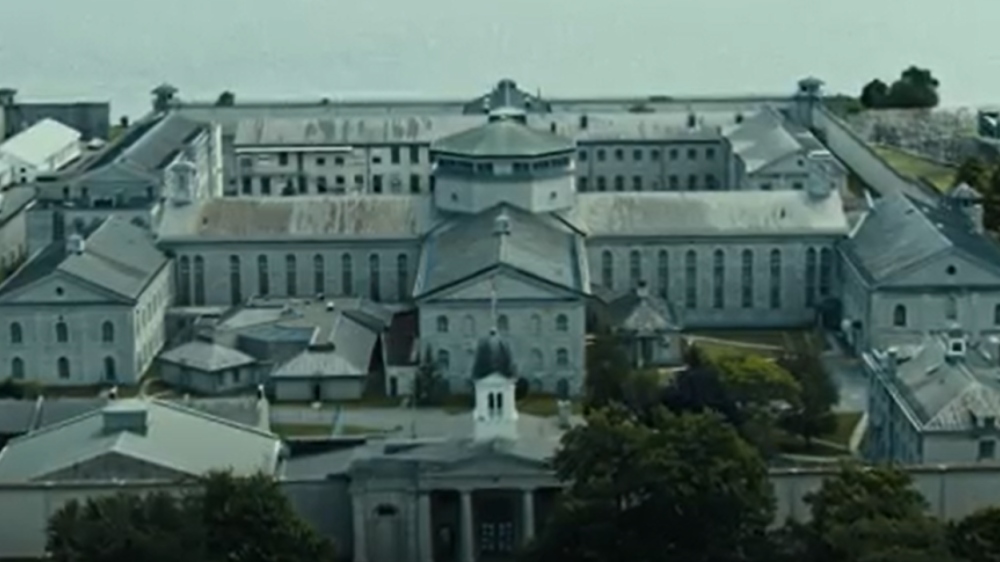
BTL: Did that affect how you chose locations?
Willett: The way we would do the locations is, I would go with the location manager to find places, pick things out, photograph them, and then send the pictures to Taylor.
The key was, it’s got to be really industrial. [We] had to have water nearby whenever we [could]. In order to shoot the plethora of locations, we should have everything self-lighting, have the sets already lit so when the DPs came on they wouldn’t have to light from scratch. The poor directors would get to town and 90 percent of what they were shooting had already been picked for them. It made it easier in some ways, but also took away some of their artistic license. The DPs even more so.
BTL: So much of the show takes place inside a men’s prison. Was that a difficult location?
Willett: The prison people were very cooperative, but it’s actually a huge touring operation. I think they make $20,000 a day during the summer, just one tour group after another. And they didn’t want anything painted over, like graffiti, because it had historical importance. Also, it was like a three-hour drive from Toronto. So you have to be super organized.
I wanted to do a lot of it on stage, but we didn’t end up building as much as I hoped.
I did three films with Alan Parker. Alan loved reality. All he wanted on Mississippi Burning was a real place. He wouldn’t shoot on stage, literally would not shoot on stage.
Taylor’s kind of the same way. He likes reality, he wants everything that comes with shooting [in] a real location. I appreciate that approach, but it does make it more difficult from a production standpoint.
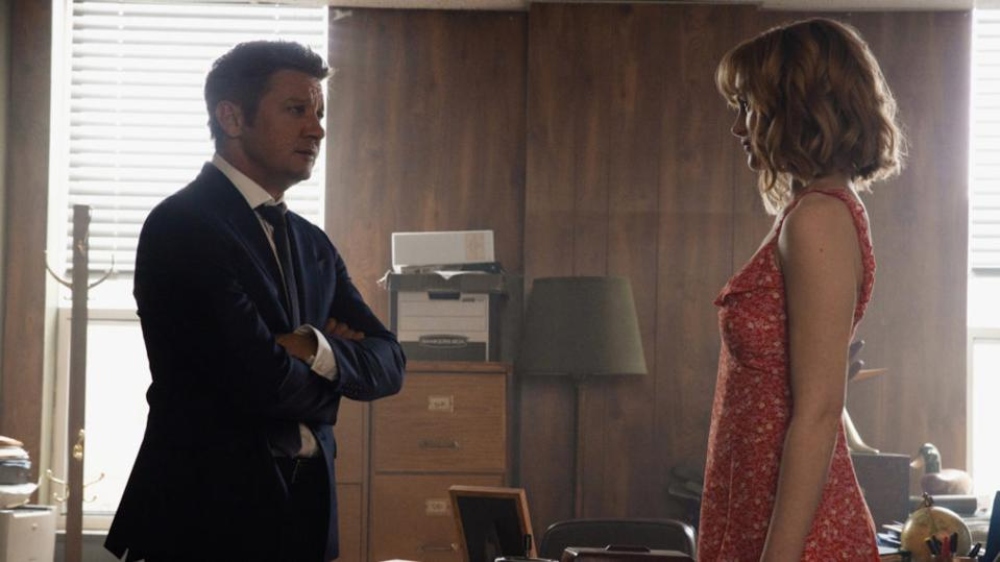
BTL: Can you talk about collaborating with Sheridan and the show’s various department heads? Many scenes take place in Mike’s cabin in the woods, so you know from the start that you will need a porch, a kitchen, a bathtub, etc.
Willett: That’s a good example actually because in a normal world we would have built that interior on stage. We found a real cabin and did big changes to it, keeping in mind how we could do it to give the DP a fighting chance to shoot there. It worked out quite well.
BTL: What about the white supremacist’s house in the suburbs? It’s the location for intense action scenes.
Willett: That was the most difficult location by far to find in the entire movie because Taylor required really specific things. He wanted a reasonably nice neighborhood. A house with an attached garage where you could enter the house. A big piece of property we could put a fence around, with an alley behind. But in Toronto, they don’t have garages and alleys in residential areas. So we had to kind of cobble it together and add a lot of stuff.
We added big chunks to that place, but the house itself was so run down, which is something I really liked about it. It lent itself to what the script needed. We built big pieces, like the bedroom, to make the whole thing work. [It was] the single most difficult location, believe it or not, because you wouldn’t think it would be.
The corridor and bedroom where they spend a lot of time, I ended up talking them into doing it on stage. Everything else had to be real. The kitchen, the bathroom, [and] the other bedrooms were so tiny, I felt really bad [for] the actors and crew.
The houses that got shot up, including this one, were mostly real places on which we added builds we could blow up. It’s immensely difficult. It really is. You’ve got to find homeowners who don’t mind all of this happening. You’ve got to find a way to add walls that can be shot without taking away the already limited space.
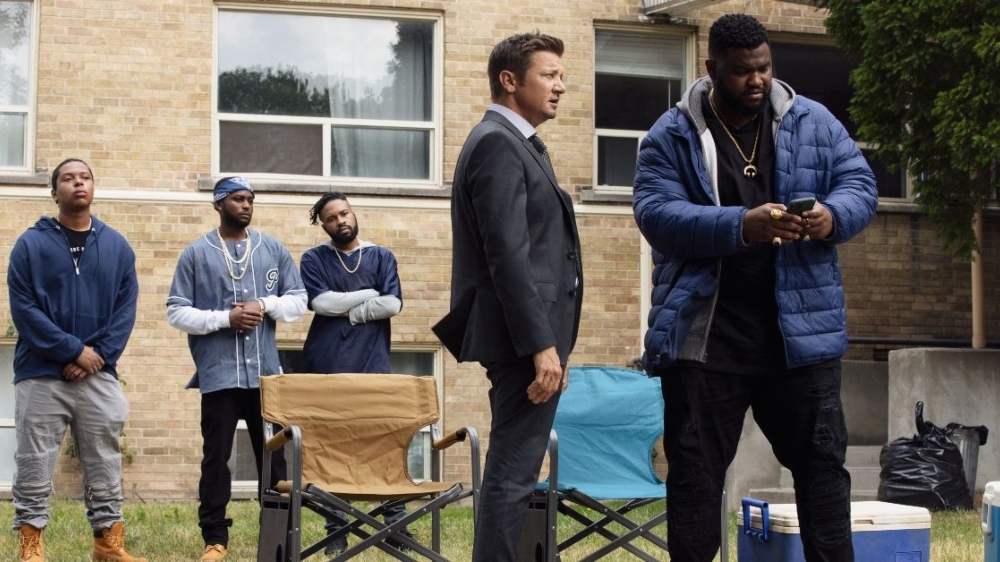
BTL: With all the fights and shootouts, how responsible are you for insuring safety on location?
Willett: The crew, the stunt guys, all were terrific. The effects guys were great, and it mostly goes to them. I’m only responsible when a body hits a wall or the floor, any of that. Making sure the stunt guys are covered. For instance, falling down [the] stairs. I’ll often replace what’s on the stairs with something more actor friendly, like a one-inch rubber top.
BTL: Does that extend to providing breakaway furniture?
Willett: Absolutely. That’s generally easy unless it’s match furniture. It’s not like an old ballroom brawl where you can just bring in whatever balsawood tables and chairs were hanging around. All this stuff had to be made [from scratch]. Any sort of breakaway glass furniture, walls, banisters, doors.
We had untold numbers of doors on the show that get shot in, broken in by the police, et cetera. You can’t use a real door for a bunch of reasons, but the door always has to do something that makes it behave like a “Hollywood” door.
If you take your shoulder and run into the front door of a house to try to break it down, it’s not going happen. What will actually happen is you break your shoulder. So the door has to give, there’s got to be some damage apparent from where the contact is made on the outside. When the door opens with a slam, you have to make it look like it’s suffering greatly, but not give way entirely.
We had one scene where the police break into a crack house where everybody’s lying around stoned, and the door gave too easily. The worst thing. We ended up having to reshoot the scene with a completely different line of doors, each with specific characteristics.
It became a complicated conversation with the stunt guys, the effects guys, [and] the construction coordinator, because it’s a stunt combined with special effects. The construction coordinator and I used to joke that this was a show about doors because we built hundreds of doors. It was crazy. For a normal movie, you build four doors — a hero and three effects doors. For this show, because it was so important not to be held up under any circumstances by stunts, the minimum number was six. Six custom-built doors that did different things. Some break away. Some had explosive charges.
The construction guys got together and had a modelmaker build a one-foot-high prison door, beautifully crafted, which they gave me to celebrate the end of the show. This is our very last door, thank God.
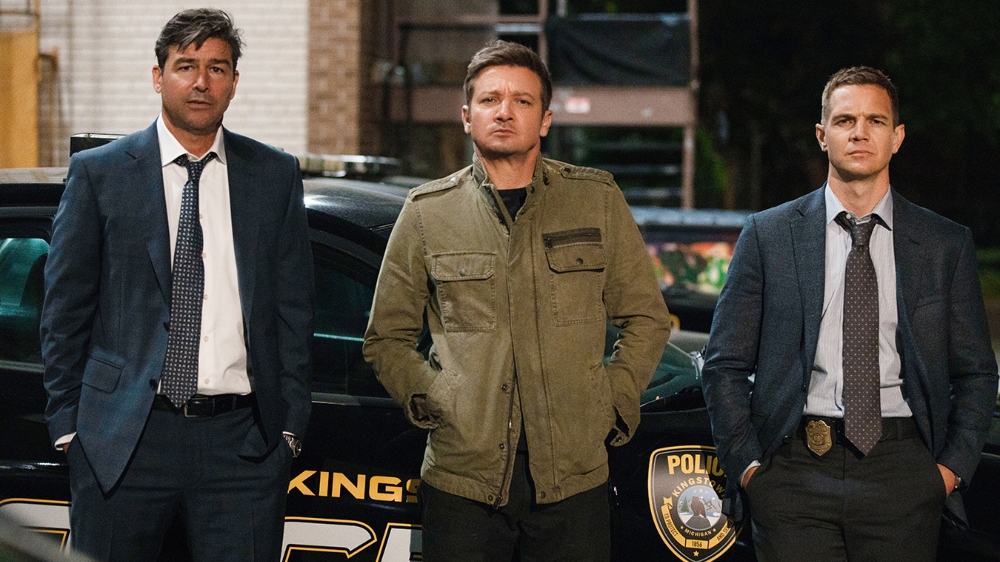
BTL: How did you shoot the crowded prison yard scenes under COVID protocols?
Willett: They were at the very end of the show, so restrictions had lightened a bit. I think there were 18 people in the COVID department who were in charge of making sure that everybody was tested. The way it worked for almost all of the yard scenes, the prisoners were in groups. And when they were done, they went back inside.
BTL: Back to jail. Did you have to secure streets for the car chases?
Willett: Very much so. Toronto and Hamilton, the cities where we were filming, have immense amounts of shooting taking place. Much more so than a place like Atlanta. The officials there have seen it all, every day.
The location manager and I drove around photographing the streets we thought would work, sent the material off to Taylor for his approval, and then basically had to arm-wrestle with the city to get what we needed, or something similar.
The look of our show is a smaller town in Michigan that’s really back on its heels, so what’s acceptable for the camera is immediately limited. With what’s acceptable for the city, it becomes infinitely worse. So I was very involved with the streets, much more so than I normally would be. It sounds like I’m whining nonstop, but it was immensely difficult.
BTL: There are enough loose ends in the plot to suggest another season.
Willett: They’re busy on that right now. It’s shooting in Pittsburgh.
Season 1 of Mayor of Kingstown is now streaming on Paramount+.





